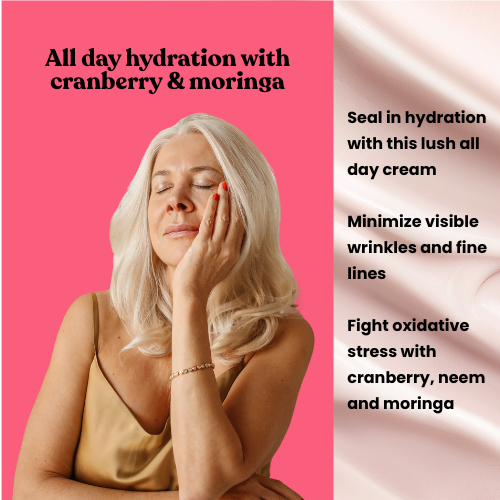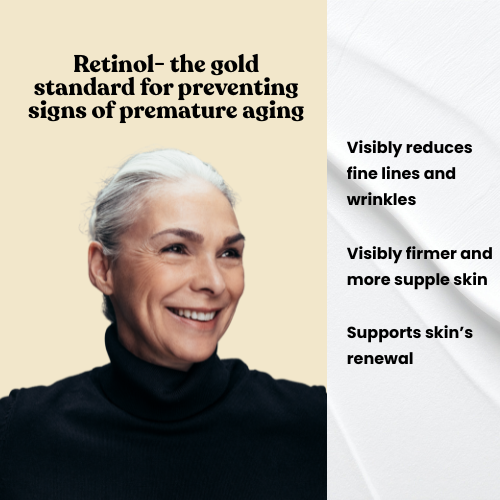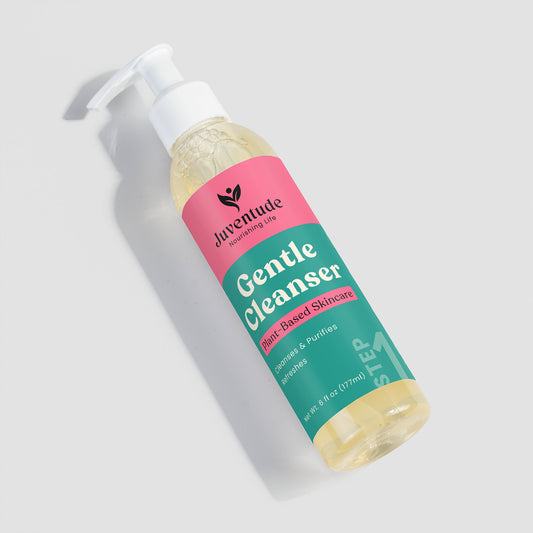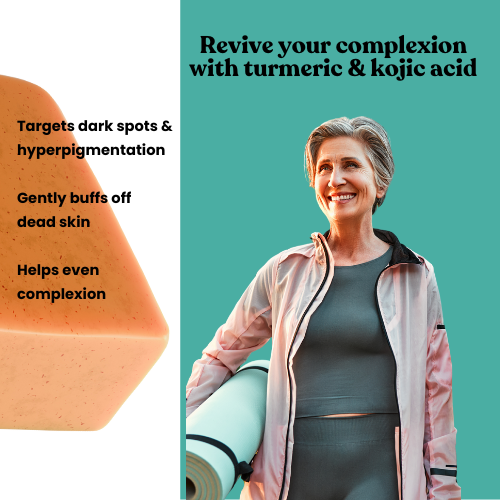-
Gentle Cleanser
Regular price $24.99 USDRegular price Sale price $24.99 USDUnit price per -
Green Tea Shield Serum
Regular price $23.99 USDRegular price Sale price $23.99 USDUnit price per -
Deep Hydration Serum
Regular price $34.99 USDRegular price Sale price $34.99 USDUnit price per -
Dry Rescue Drops
Regular price $22.99 USDRegular price Sale price $22.99 USDUnit price per -
Everyday Hydration Cream
Regular price $27.99 USDRegular price Sale price $27.99 USDUnit price per -
Skin Harmony Toner
Regular price $26.99 USDRegular price Sale price $26.99 USDUnit price per -
Restorative Eye Gel
Regular price $35.99 USDRegular price Sale price $35.99 USDUnit price per -
Nighttime Bakuchiol Renewal Cream for Sensitive Skin
Regular price $42.99 USDRegular price Sale price $42.99 USDUnit price per -
Nighttime Retinol Renewal Cream for Normal Skin
Regular price $39.99 USDRegular price Sale price $39.99 USDUnit price per -
Anti-Aging Routine for Sensitive Skin
Regular price $208.99 USDRegular price Sale price $208.99 USDUnit price per -
Green Tea Relief Gel
Regular price $25.99 USDRegular price Sale price $25.99 USDUnit price per -
Turmeric Therapy Bar
Regular price $14.99 USDRegular price Sale price $14.99 USDUnit price per

Dry skin?
Do you still have dry skin and don't know where to start? Try adding a Deep Hydration Serum to your daily routine.
Ready for something comprehensive? Check out our curated routine designed for dry skin.
Find Your Nourish: A Gentle Guide to Hydrating Dry Skin
Dry skin deserves special attention and extra care. If your skin often feels tight, flaky, rough, or looks dull, you’re not alone. Discomfort, itchiness, and visible dryness can disrupt your day-to-day life, but with a mindful approach, you can restore comfort and create a healthy, radiant complexion. The journey to deeply hydrated, resilient skin starts with understanding its unique needs and caring for it with nourishing routines. We're here to help you replenish your skin’s moisture and help it reclaim its natural glow.
Indicators of Dry Skin
Recognizing dry skin begins with noticing certain signs—persistent roughness, visible flaking, tightness (especially after washing your face), and sometimes itchiness or mild irritation. Your skin may appear lackluster, and fine lines can be more noticeable. Dryness often affects the face, hands, legs, and other areas exposed to air and frequent washing. Being vigilant about these signs can help you adjust your care routine before discomfort worsens.
Understanding Your Dry Skin
Dry skin isn’t just a passing feeling—it arises when the skin produces less natural oil (sebum) and loses its ability to retain moisture. With a weakened or depleted moisture barrier, water escapes more easily, leaving skin exposed to environmental factors, irritants, and further dehydration. People with dry skin are more susceptible to rough texture, sensitivity, and premature aging if not cared for properly.
The Skin Barrier: Your Moisture Shield
The skin barrier, also known as the moisture barrier or lipid barrier, is the outermost layer of your skin. It’s made up of skin cells and lipids (fats) that act as a waterproof shield. When healthy, it locks in hydration and shields against irritants, allergens, and pollution. When compromised—as can happen with harsh products, over-cleansing, or exposure to dry air—microscopic cracks let moisture escape, making skin drier and promoting redness, flaking, and discomfort.
Supporting and fortifying this barrier is crucial for those with dry skin. The right products and habits help minimize water loss, restore lipids, and keep your skin feeling soft, supple, and renewed.
Common triggers for dry skin include:
- Harsh Cleansers: Soaps with sulfates, strong detergents, or high alcohol content can strip natural oils and dry out skin.
- Cold or Dry Weather: Low humidity and cold air can dehydrate skin and exacerbate dryness.
- Frequent Washing or Hot Water: Over-washing or using hot showers removes oils needed to lock in moisture.
- Skin Conditions & Health Factors: Conditions like eczema, or hormonal and age-related changes, can impact how your skin retains moisture.
- Air Conditioning & Heating: Indoor environments with artificial heating or cooling often reduce humidity, pulling moisture from your skin.
Why Cleansing is Essential for Dry Skin
Cleansing is vital for healthy skin but must be done gently. Dry skin benefits most from a fragrance-free cleanser that removes dirt and impurities without stripping away natural oils. Cleansing should leave your skin feeling comfortable—not tight or dry. Limiting cleansing to once or twice a day and using lukewarm (not hot) water helps preserve important moisture. This prepares skin to absorb comforting serums and rich moisturizers that follow.
Why Use a Green Tea Serum for Dry Skin
Adding a green tea serum to your routine can help dry skin retain moisture and fight against environmental stressors. Green tea is full of antioxidants that protect skin from free radicals and pollution, which can worsen dryness. Its gentle anti-inflammatory properties can also help ease redness or irritation—common with dry skin. Many green tea serums are combined with hydrating ingredients, making them ideal for lightweight nourishment before applying heavier moisturizer.
Why Use a Hydration Serum for Dry Skin
Hydration is essential for dry skin, and serums with hyaluronic acid are especially effective. Hyaluronic acid is a powerhouse humectant—it draws moisture from the environment and infuses it deep into your skin, instantly plumping and smoothing rough areas. It’s non-irritating and light, yet hugely hydrating, making it perfect for layering under a rich moisturizer. Regular use of a hydration serum with hyaluronic acid can minimize flakiness, improve comfort, and build long-term resilience against everyday dryness.
When to Use an Additional Dry Relief Drop with Squalane
For those times when your skin feels uncomfortably tight or overly dry, incorporating a dry relief drop with squalane can make a world of difference. Squalane is a natural emollient that mimics your skin's own moisture, providing an extra boost of hydration and locking it in to prevent water loss. These drops are lightweight and absorb quickly, making them an excellent choice during transitional weather, after prolonged sun exposure, or in dry indoor environments like air-conditioned offices. To elevate your routine, simply mix a few drops into your favorite moisturizer or apply them directly to problem areas for an instant soothing effect. Regular use can help strengthen your skin's natural barrier, maintaining softness and suppleness even during stressful or seasonal changes.
Why Use a Daily Moisturizer for Dry Skin
A moisturizer is your dry skin’s best friend. Choose a nourishing, emollient-rich formula designed to create a protective seal on your skin—trapping in the hydration you’ve layered underneath while shielding from wind, cold, and pollution. Look for moisturizers rich in natural extracts like green tea and licorice root can also help soothe uncomfortable tightness, repair the moisture barrier, and restore a soft, supple texture. For optimal comfort and protection, apply morning and night.
Why Use a Toner for Dry Skin
A gentle, alcohol-free toner can instantly deliver thirst-quenching hydration after cleansing, helping to refresh skin and prep it for serums and moisturizers. Look for toners with rose water, aloe vera, or other hydrating botanicals which calm irritation and boost your skin’s water content. This extra step can lock in comfort, balance your complexion, and help keep dry patches at bay.
Why People with Dry Skin Should Use Bakuchiol Instead of Retinol
Bakuchiol provides rejuvenating benefits similar to retinol but without the common side effects of peeling or extra dryness—making it ideal for dry skin. While retinol speeds up cell turnover and stimulates collagen, it can sometimes be harsh, causing flaking, irritation, and increased dryness. Bakuchiol is a plant-based alternative that helps soften fine lines, even skin tone, and promote a radiant glow. It’s gentle, supports the skin barrier, and is safe for daytime use as it is not photosensitizing. If your skin often reacts to traditional retinoids, bakuchiol offers a soothing, effective way to target signs of aging without exacerbating dryness.
Practical Tips to Soothe and Protect Dry Skin
Simple daily habits can make a world of difference for dry skin’s health and comfort. Here are some easy, effective DIY tips:
1. Use a Humidifier at Home
- Keeping a humidifier running in your bedroom, especially in winter, adds moisture to the air and helps prevent your skin from becoming dry or flaky overnight.
2. Apply Moisturizer Immediately After Bathing
- Trap in moisture by moisturizing within minutes of patting your skin dry post-shower or cleansing. This seals water into your skin and boosts softness.
3. Stay Hydrated
- Drink plenty of water throughout the day to support your skin’s hydration from within.
4. Avoid Long, Hot Showers
- Hot water and long baths strip away natural oils; stick with brief, lukewarm showers to avoid worsening dryness.
5. Sleep on Silk or Satin Pillowcases
- These materials cause less friction on your skin than cotton, reducing dryness and morning roughness.
6. Wear Soft, Natural Fabrics
- Choose clothing and bedding made from cotton or bamboo, which are less likely to absorb skin moisture or cause irritation.
7. Gently Exfoliate Once a Week
- Use a gentle exfoliant suitable for dry skin to remove dead skin cells and help moisturizers sink in better. Avoid abrasive scrubs that can scratch and dry skin further.
8. Patch Test New Products
- Always patch test new skincare items to ensure they do not irritate or overly dry out your skin.
9. Choose Gentle, Fragrance-Free Laundry Detergents
- Harsh detergents can further dry your skin. Opt for mild, hypoallergenic formulas.
10. Limit Alcohol and Caffeine
- These can have a dehydrating effect on your body and skin; moderation and proper hydration help counterbalance their effects.
11. Eat Skin-Nourishing Foods
- Foods rich in healthy fats (like avocados, nuts, olive oil, and fatty fish) help reinforce your skin’s natural barrier and moisture balance.
12. Protect Skin from the Elements
- In cold, windy, or sunny weather, cover up with scarves, hats, or gentle sunscreens designed for dry skin.
These self-care tips can go a long way in keeping your dry skin comfortable, supple, and glowing.
Know the Ingredients
Knowing what’s in your skincare helps you make choices that nourish and protect dry skin.
Ingredients to Avoid for Dry Skin:
- Strong Fragrances: Can further dry out and irritate your skin.
- Sulfates (SLS/SLES): Harsh detergents strip away oils needed for hydration.
- Alcohol-Based Toners: These can dehydrate your skin and worsen dryness.
- Harsh Exfoliants: Rough scrubs or high concentrations of acids can leave dry skin even more depleted.
Care for Your Dry Skin
Ready to provide your skin with the replenishing, gentle care it craves? Discover safe, effective solutions designed to hydrate, comfort, and restore dry skin.
























